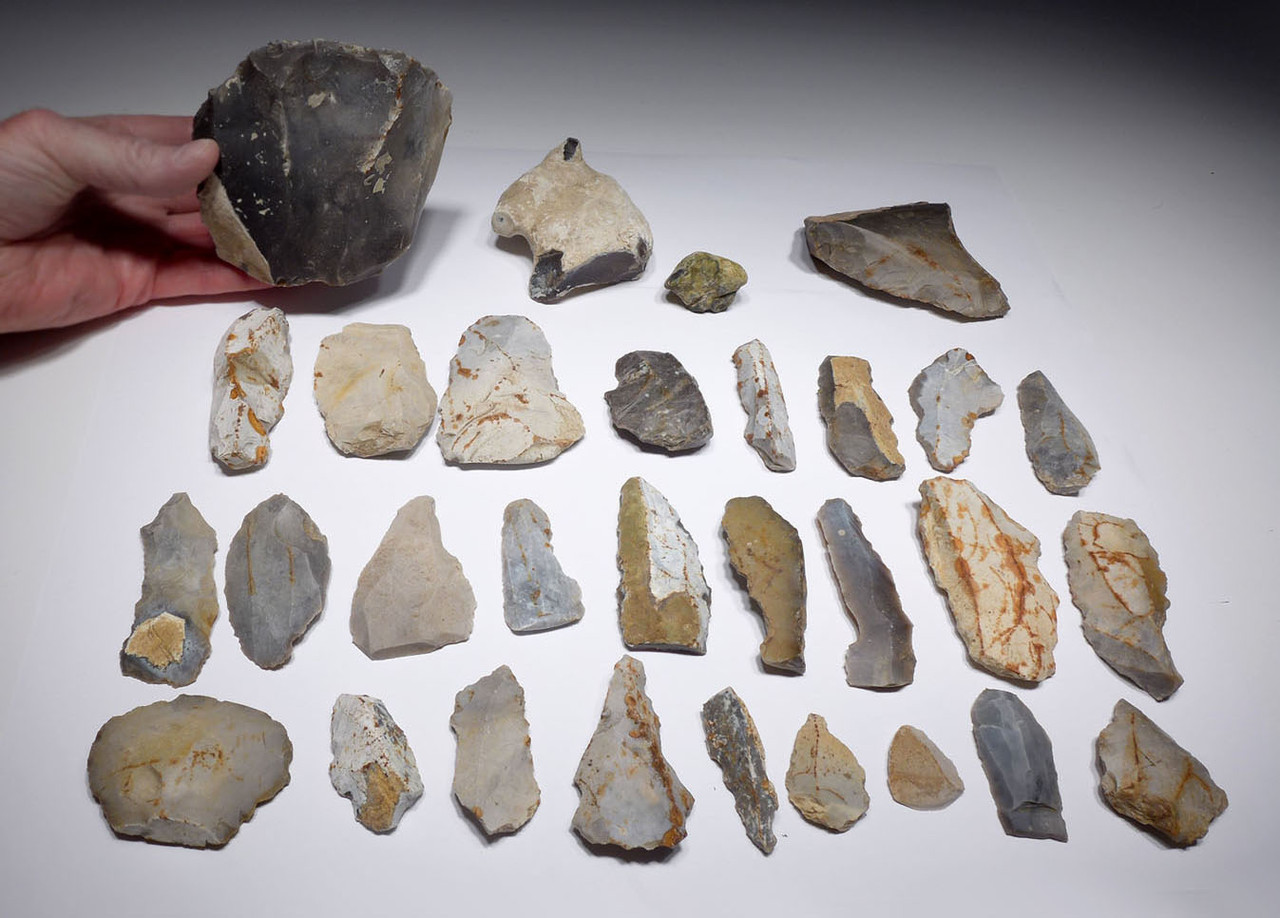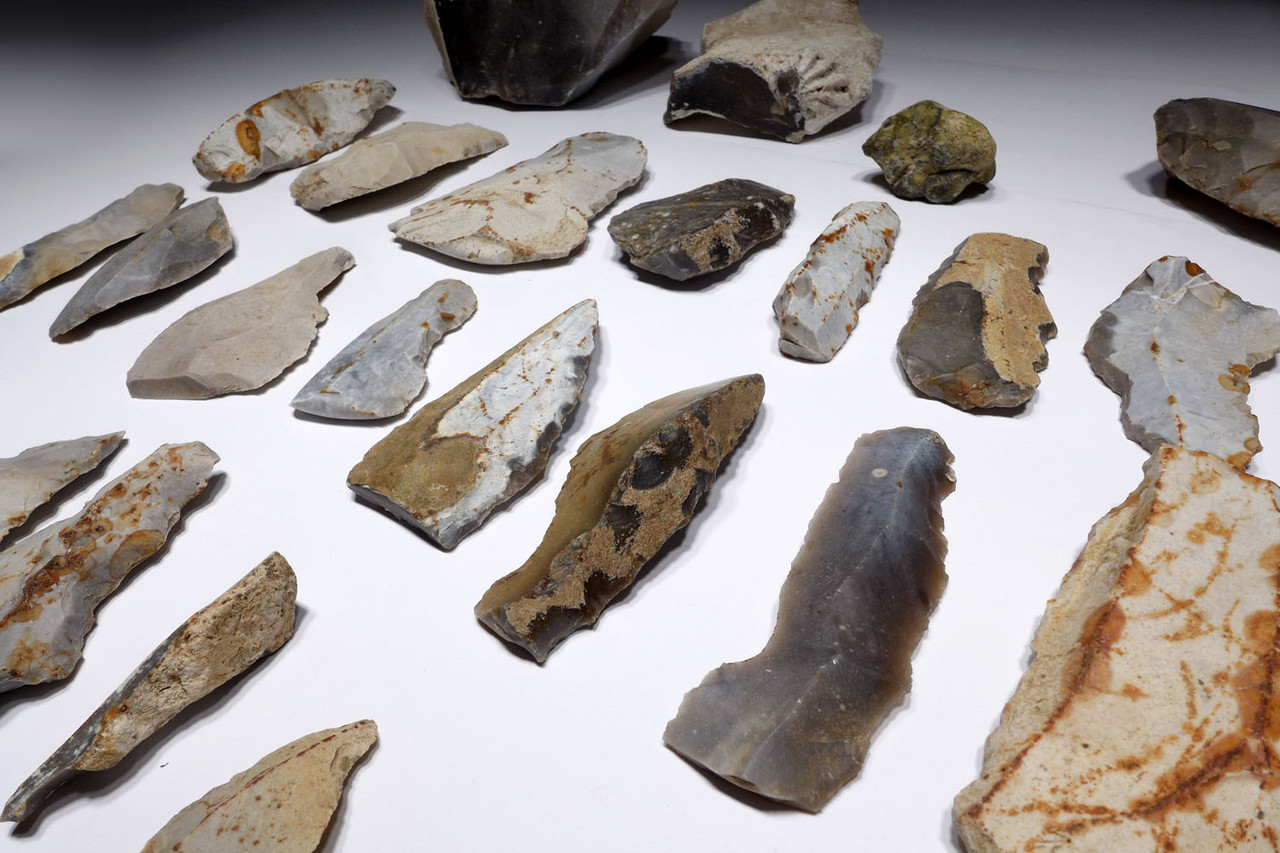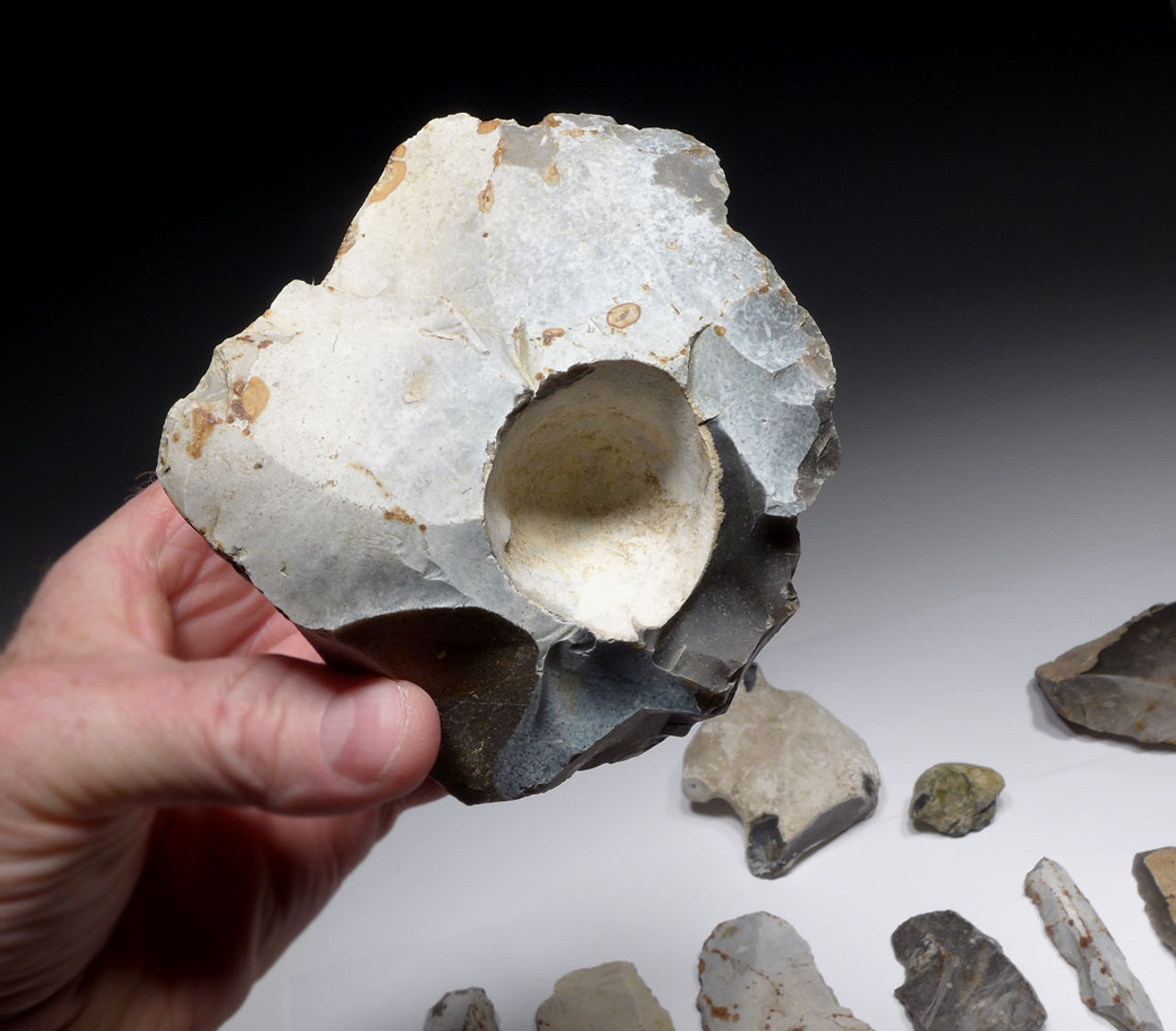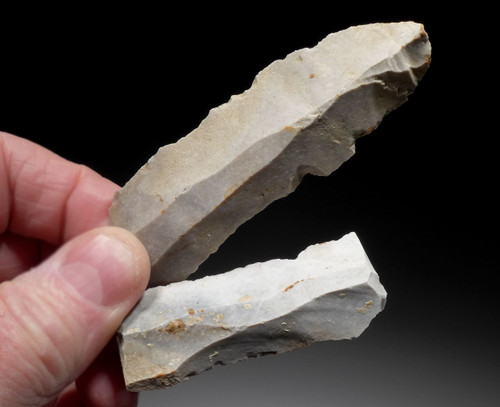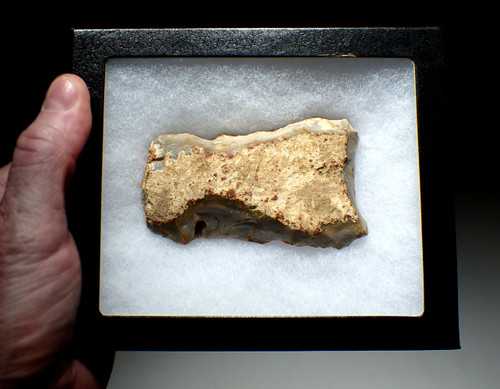Product Description
SEE MORE EUROPEAN NEOLITHIC ARTIFACTS
Perfect for an institutional or university display of European Neolithic tool manufacture, this excellent collection is comprised of 27 flake tools, a large flake core, and two raw pieces of flint, all of which were collected from the same site by the famous Spiennes Neolithic flint mining and trade region. All are made of flint and together, make for a spectacular display that fully demonstrates from raw material to finished flake tool, the Neolithic tool tradition of one of the most active and well-known trading centers of the first farming societies of Europe.
The flake tools include a multitude of typologies. One of the pieces of raw flint shows a fantastic fossilized oyster impression in the natural nodule surface. Finally, the large flake tool core is quite impressive with a large natural fossil depression in the top surface of the original flat striking platform. Every flake tool that you would need back in this time would have come from cores like this!
Since the 1800's, European collectors have been walking the plowed farm fields of the region, surface-collecting flint Neolithic artifacts that are turned over by the farmers' plows each year. Unfortunately, that same plow that allows one to make such a discovery, is also responsible for breaking and damaging the flint artifacts. Finding exceptional and unbroken specimens such as these, takes some time TODAY.
HISTORY
The declaration in the year 2000 by UNESCO protecting the Neolithic flint mines at Spiennes was highlighted by three main criteria as quoted: "1) The Neolithic mines at Spiennes provide exceptional testimony to early human inventiveness and application, 2) The arrival of Neolithic cultures marked a major milestone in human cultural and technological development, which is vividly illustrated by the vast complex of ancient flint mines at Spiennes. 3) The flint mines at Spiennes are outstanding examples of Neolithic mining of flint, which marked a seminal stage of human technological and cultural progress."
These mines cover more than 250 acres and represent the largest and earliest concentration of ancient mines in Europe! A large diversity of methods were employed to extract the flint by open quarries, pits and networks of underground horizontal galleries. Vertical tunnels range from 30 to 40 feet deep. Shafts were sunk through the chalk layer vertically with galleries radiating out from the shafts. Unique to Spiennes, when the flint was exhausted above the bedrock, the rock layer was penetrated to reach the chalk layer below. This feature shows the mastery these Neolithic humans had of their local geology!
Mines were dug with only the aid of antler picks and bone shovels demonstrating an incredible feat based on the expansiveness of the site. Despite the miners' knowledge to leave pillars in the horizontal galleries for roof support, skeletons of workers have been found in collapsed shafts at Spiennes.
Flint tools from the mining site at Spiennes represent an icon of Neolithic technology, trade and culture. Every collection should have at least one tool from this official 'world-class' site.
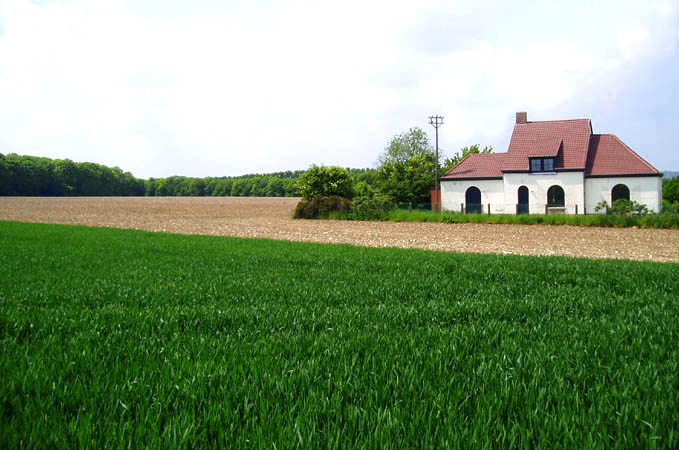
FIELD IN SPIENNES, BELGIUM WHERE THESE TOOLS WERE COLLECTED
 US DOLLAR
US DOLLAR
 EURO
EURO
 AUSTRALIAN DOLLAR
AUSTRALIAN DOLLAR
 CANADIAN DOLLAR
CANADIAN DOLLAR
 POUND STERLING
POUND STERLING

